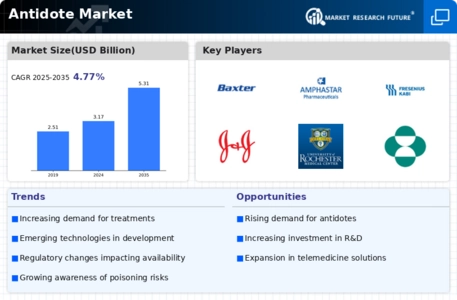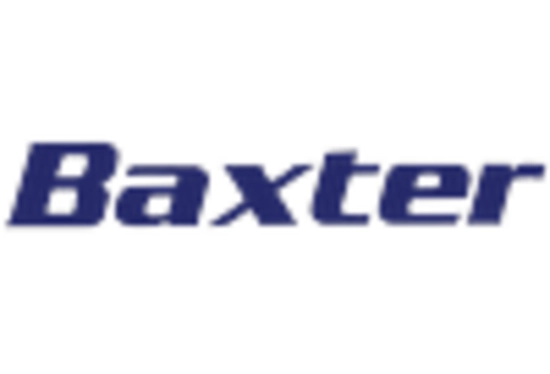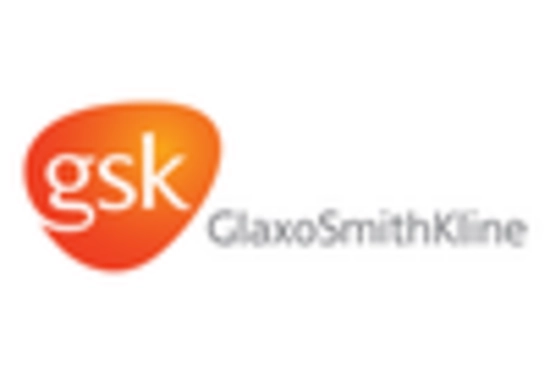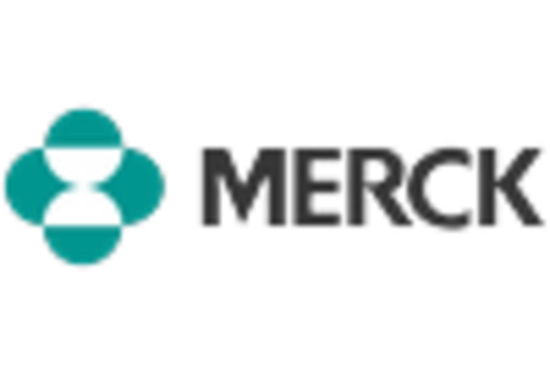Rising Incidence of Drug Overdoses
The increasing incidence of drug overdoses is a significant driver for the Antidote Market. With the rise in substance abuse and the availability of potent drugs, the need for effective antidotes has become more pressing. Data indicates that overdose-related fatalities have escalated, prompting healthcare systems to prioritize the development and distribution of antidotes. This trend is particularly evident in regions where opioid use has surged, leading to a greater demand for specific antidotes such as naloxone. The Antidote Market is likely to respond to this growing need by innovating and expanding its product offerings, ensuring that healthcare providers have access to the necessary treatments to combat overdose situations.
Expansion of Healthcare Infrastructure
The expansion of healthcare infrastructure is a pivotal driver for the Antidote Market. As healthcare facilities grow in number and capability, the availability of antidotes becomes more widespread. Enhanced healthcare systems, particularly in developing regions, are likely to improve access to emergency medical services, which is essential for the timely administration of antidotes. According to recent data, investments in healthcare infrastructure have surged, with many countries allocating significant budgets to enhance emergency care. This trend suggests that the Antidote Market will experience growth as more healthcare facilities are equipped to handle poisoning cases effectively. Additionally, the integration of antidotes into standard treatment protocols within hospitals further supports the market's expansion.
Advancements in Pharmaceutical Research
Advancements in pharmaceutical research are driving innovation within the Antidote Market. Ongoing research efforts are focused on developing new and more effective antidotes for a variety of toxins and drugs. This research is often supported by academic institutions and pharmaceutical companies, which collaborate to identify novel compounds that can neutralize specific poisons. The introduction of new antidotes not only enhances treatment options but also stimulates market growth as healthcare providers seek the latest solutions for managing poisoning cases. Furthermore, the Antidote Market is likely to benefit from increased funding for research initiatives aimed at understanding the mechanisms of toxicity and antidote efficacy, leading to improved patient outcomes.
Regulatory Support for Antidote Development
Regulatory support for antidote development is a critical factor influencing the Antidote Market. Governments and regulatory bodies are increasingly recognizing the importance of antidotes in public health and are implementing policies that facilitate their development and approval. This support may include expedited review processes for new antidotes, as well as funding for research and development initiatives. Such regulatory frameworks are likely to encourage pharmaceutical companies to invest in antidote research, thereby expanding the market. Additionally, the Antidote Market may see a rise in partnerships between public and private sectors aimed at enhancing the availability of antidotes, ultimately improving patient care and safety.
Increasing Awareness of Antidote Availability
The rising awareness regarding the availability and efficacy of antidotes plays a crucial role in the Antidote Market. Educational campaigns and public health initiatives have been instrumental in informing healthcare professionals and the general public about the importance of timely antidote administration in cases of poisoning or overdose. This heightened awareness is likely to drive demand for antidotes, as individuals and healthcare providers become more proactive in seeking treatment options. Furthermore, the Antidote Market benefits from collaborations between governments and healthcare organizations that aim to improve access to these life-saving treatments. As a result, the market is expected to witness a steady increase in the adoption of antidotes, particularly in regions where poisoning incidents are prevalent.

















Leave a Comment